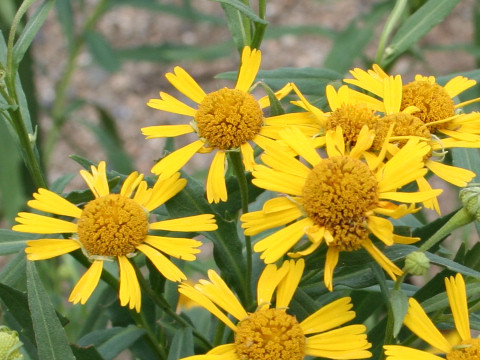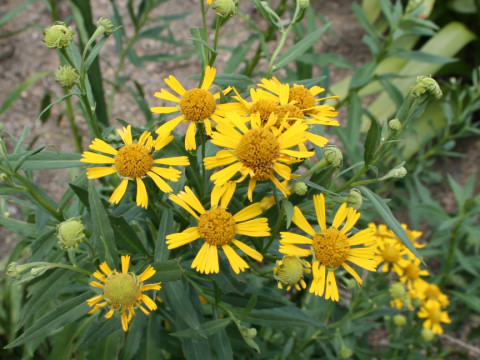 |




|

|
kAJÉLªzµÄ¢Ü·B¼nâ¼èCÌ énÈÇɶ¦A³ÍUO`PTOZ`ÉÈèÜ·BtÍâj`ÅݶµAÉÍש¢ª èÜ·BW©çPP²ëAs¸É¼aQDT`TZ`Ì©F¢Ôð穹ܷB^ñÌóÔ̪ª¼
óÉ·èãªé½ßAa¼ÅÍu¾ñ²¬icqejvÆÄÎêÜ·B
|

|
LNÈwjE®Ì½NÅAw¼Í Helenium autumnaleisyn. Helenium autumnale var. canaliculatumjBp¼Í Common sneezeweedB
|

|
The Common sneezeweed (Helenium autumnale) belongs to Asteraceae (the Aster family). It is a perennial herb that is widely distributed in North America. It grows in marshes and wet meadows and grows 60 to 150 cm tall. The leaves are lanceolate and alternate with finely serrated edges. Yellow flowers 2.5 to 5 cm in diameter bloom at the top of the stem from August to November. It is called "Dango-guku" (meaning "rice dumpling chrysanthemum" in Japanese) because the tubular flower in the center rises in a hemispherical shape.
|

|
ss¶æus{§A¨vÉÄA2005N0816úBeB
|



